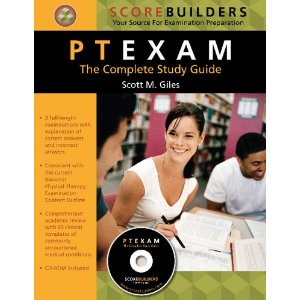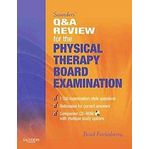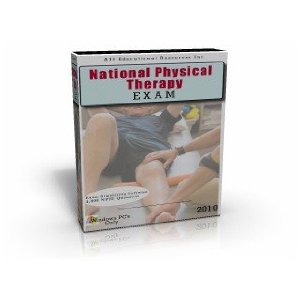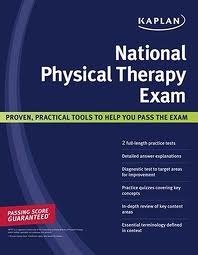NPTE Phystical Therapist (PT) Exam Study Guides
June 6, 2011 by Rn2b
Filed under Nursing Books, Physical Therapist (PT), Testing and Exam Help
A Physical Therapist (PT) works with all ages and deals with functional issues in a patient. These issues usually result from injury or diseases.
A PT must construct a plan based upon a patient in order to restore the function, mobility, and prevention of further disability. This usually includes wellness and fitness programs, therapeutic exercise, manual therapy, physical agents, electrotherapeutic modalities, and functional training. Usually they require the use of assistive devices and equipment.
In order to become a PT, the requirements are different from state to state. They usually have a Master’s degree which takes about 2-2.5 years, and some have doctoral degrees. They need basic knowledge in biology, anatomy, physiology, pharmacology, and much more. They must pass the National Physical Therapist Exam (NPTE) in order to be licensed.
 Many PTs that have passed the NPTE recommend the PTEXAM: The Complete Study Guide by Giles which includes a CD. The book doesn’t just tell you what is right: it also explains why an incorrect answer is wrong, helping the studying
Many PTs that have passed the NPTE recommend the PTEXAM: The Complete Study Guide by Giles which includes a CD. The book doesn’t just tell you what is right: it also explains why an incorrect answer is wrong, helping the studying  process. The layout is extremely easy and comprehensive, easy to navigate and find the required foundation of knowledge.
process. The layout is extremely easy and comprehensive, easy to navigate and find the required foundation of knowledge.
Another book recommended is Saunders’ Q&A Review for the Physical Therapy Board Examination. It has over 1200 multiple choice questions and more on the CD which has an unlimited number of randomized practice tests to promote comfort when you are actually taking the NPTE. It is organized by topic, gives rationales, and offers references to help you.
Physical Therapist (PT) NPTE and PTEXAM Study Guides
May 30, 2011 by Rn2b
Filed under Nursing Books, Physical Therapist (PT), Testing and Exam Help
A Physical Therapist (PT) is a nurse that helps patients with physical disabilities or injuries. They help the patient attempt full use of parts, or practice motor skills.
A PT must be able to communicate effectively with patients, doctors, and other nurses to ensure optimal patient recovery.
While each state requires different types of licensure, many schools offers PT training programs, and helps the PT understand things like biology, anatomy, physiology, and so much more that helps in the day-to-day affairs of a PT’s life.
 In order to get licensed, a PT must pass their state’s version of the NPTE (National Physical Therapy Examination). One
In order to get licensed, a PT must pass their state’s version of the NPTE (National Physical Therapy Examination). One  recommended study material is the 2011 NPTE Review Simulation Software: 4,000 NPTE Questions for the PTEXAM. It works on Windows only, but covers many of the foundations for a PT exam.
recommended study material is the 2011 NPTE Review Simulation Software: 4,000 NPTE Questions for the PTEXAM. It works on Windows only, but covers many of the foundations for a PT exam.
A book many licensed PTs use is the Kaplan National Physical Therapy Exam by Chapman and Fratianni. If covers key content areas, has full length practice tests, helps practice diagnostics, explains terminology, and much more.

